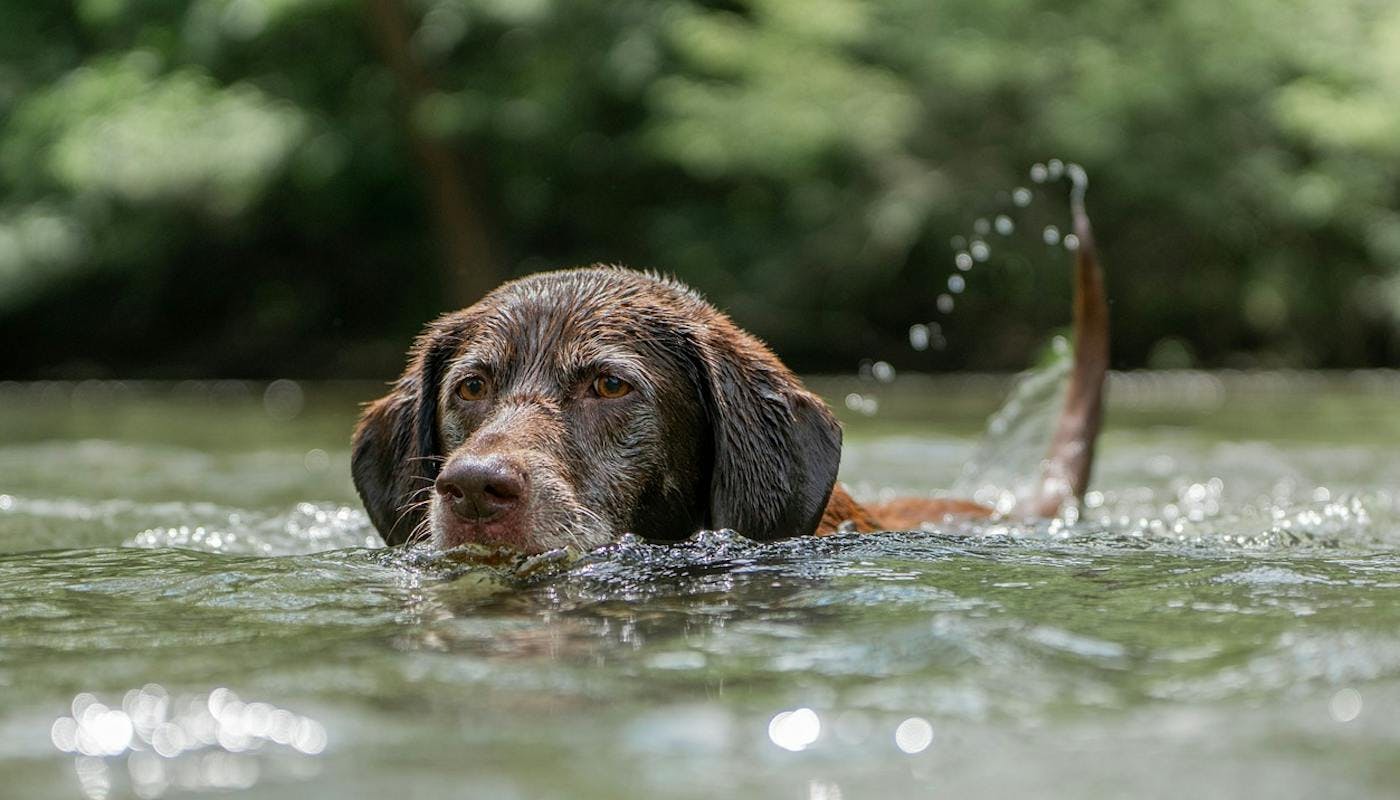Can All Dogs Swim?
Does every dog have the natural ability to survive in water? Is it possible to teach your dog to swim? Learn about swimming and canine safety in open water.
Can All Dogs Swim?
Can all dogs swim naturally? Well, in an emergency, most dogs have the natural instinct to keep their heads above water and move to stay afloat – but that’s not exactly the same as swimming.
In fact, not every dog has evolved to swim, and not every dog can learn, either. The idea that all dogs can confidently swim is a myth!
Let’s take a look at those who can. Many breeds have been bred with special features which help them to swim strongly. Labradors/learn/dog-lifestyle/your-guide-to-the-labrador-retriever, Newfoundlands/learn/dog-lifestyle/top-10-dog-breeds-for-country-living#:~:text=all%20their%20might.-,The%20Newfoundland,-The%20Newfoundland%20is, and Water Spaniels are known for having ‘webbed’ paws. Take a look and you’ll see a membrane between their toes. It turns their paws into wide paddles so they can swim with ease.
These breeds, among others, were bred to take to water. For instance, the Newfoundland was bred in Canada, where it worked on fishing boats, and hunting dogs like Water Spaniels would swim out to retrieve prey on water. The strongest swimmers (and retrievers) were selected for breeding, and they were the ones with the wide, webbed paws and water-repellent double coats.
Which Dogs Can’t Swim?
Certain breeds can’t – or won’t – swim. This is due to their build and physical limits, as well as the purpose for which they were bred.
For example, Dachshunds/learn/dog-lifestyle/is-a-dachshund-the-right-dog-for-you, and other small breeds, have very short legs which don’t make the best oars and therefore making swimming very difficult. Brachycephalic dogs/learn/dog-lifestyle/brachycephalic-dog-breeds-what-owners-need-to-know (like Pugs/learn/dog-lifestyle/what-should-i-know-before-getting-a-pug, Bulldogs/learn/dog-lifestyle/how-long-do-bulldogs-live, and Boxers/learn/dog-lifestyle/flat-faced-dog-breeds-101) might struggle for breath if the water goes up their noses. Stocky dogs (like Corgis/learn/dog-lifestyle/everything-you-need-to-know-about-corgis) – with barrel-shaped middles – can also struggle to stay afloat (especially if they also have short legs). Many of these dogs will be reluctant to get into the water and, once in, become frightened and flappy.
However, every dog is different. If your dog seems to love the water, you can try teaching them to swim.
How to Teach Your Dog to Swim
It’s less about teaching your dog and more about encouraging them to explore the water and see whether they enjoy it. You’ll soon see whether your dog enjoys swimming – and if they don’t, it’s time to stop.
Ask your vet or breeder about the best age to begin water training. In general, the younger you can start, the better. Just like most things (including people and new places), the open water should be gradually introduced to your young dog as part of their advanced socialization practice.
From the age of 12 weeks (when fully vaccinated), most dogs can be permitted to explore suitable stretches of land and water. On the coast or lakeside, allow your dog to venture into the shallows at their own pace. Here are some tips on teaching your dog to swim, at any age:
- If their body shape is unconducive to swimming, first dress them in a dog swim vest so that they won’t struggle to stay afloat.
- Choose a safe site for their first swim – a placid lake or pond are ideal. If you don’t have access to somewhere suitable, you could look for a local doggy pool or even put up a paddling pool in your backyard. (You can buy pools which are strong enough to resist tears from canine claws.)
- Let your dog direct the adventure. On their very first try, your dog might just explore the water’s edge. You’ll get a good idea whether they like the water – just watch to see how they behave. You might need a few visits before your dog braves the water.
- If your dog needs you to bolster their confidence, put on your own swimming kit and walk out into the water with your dog. Support their middle as they start to paddle. Don’t walk out too deep. Be patient. Keep the experience short and relaxed.
- There’s no need to give them a lecture on swimming strokes. Your dog will have an instinct that tells them (a) whether they like the water and (b) how to move through water when the ground disappears.
- If your dog is worried, they might try to jump up or climb onto you. That’s okay – retreat towards the dry land, encouraging them to follow you, and let them decide whether to try again.
- Keep them in the shallows and (if they start to enjoy their swim) watch your dog carefully for signs of tiredness. Their first swim will take a lot of mental and physical energy!
Safety in Open Water
Your dog might wish to swim in open water. Choose a place which is safe for people – like us, dogs aren’t strong enough to handle riptides or strong river currents. Canals, reservoirs and rushing rivers are no-go.
The sea (with a gentle tide), a lake, or slow-flowing river are better choices. Even then, there can be branches or underwater debris which pose hazards to swimming dogs. So remove your dog’s harness to avoid entanglement and watch them while they swim.
If you want to swim with your dog, it’s important that you both stay within reasonable distance of the water’s edge in case they start to tire, and that applies to dogs of all experience levels.
Further Reading
Read about the risks posed by blue-green algae/learn/dog-health/how-can-i-keep-my-dog-safe-from-blue-green-algae – and how to spot it. Does your dog suffer from repeated ear infections?/learn/dog-health/why-does-my-dog-keep-getting-ear-infections It’s important to dry their ears after swimming. And before you hit the beach, read our guide for dog owners./learn/dog-health/read-this-before-you-take-your-dog-to-the-beach
